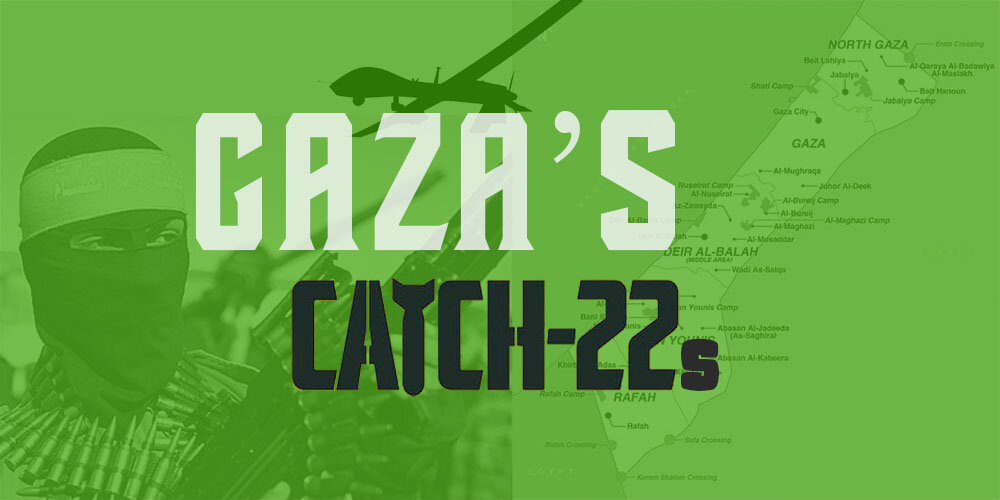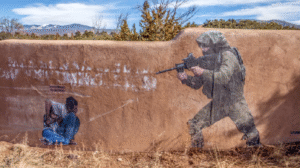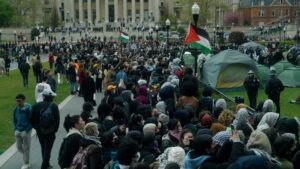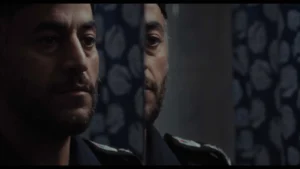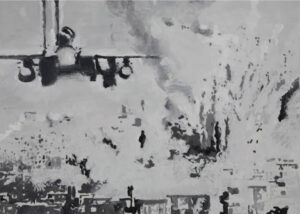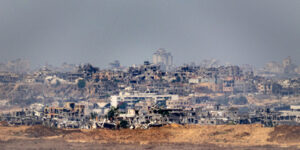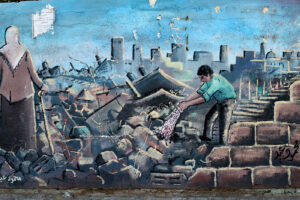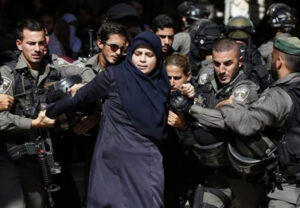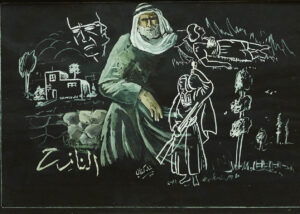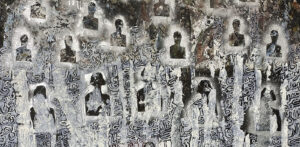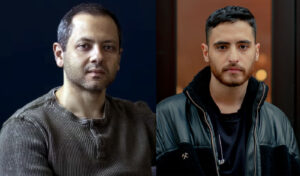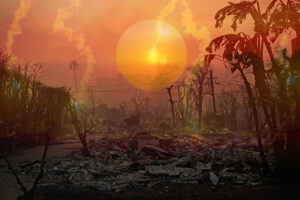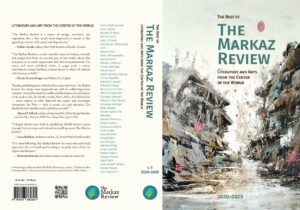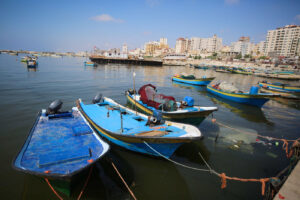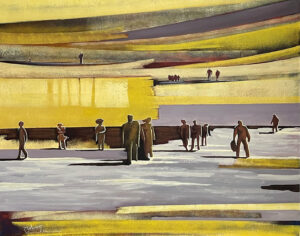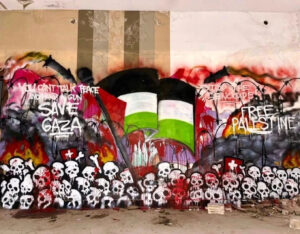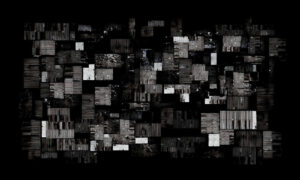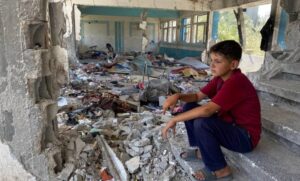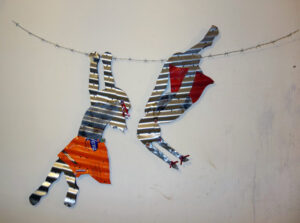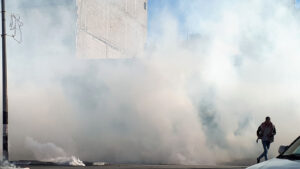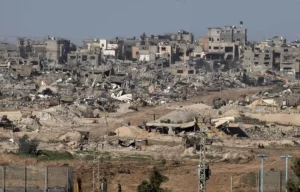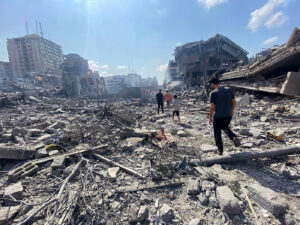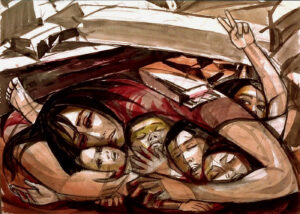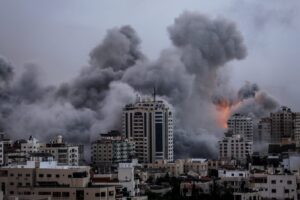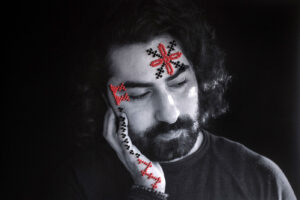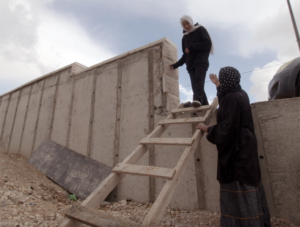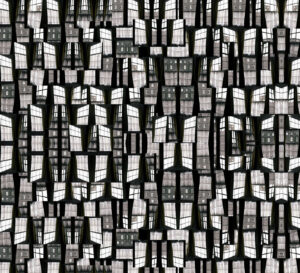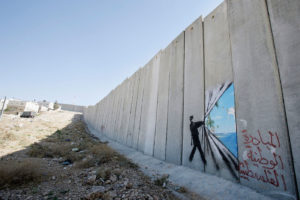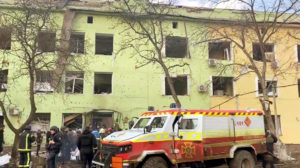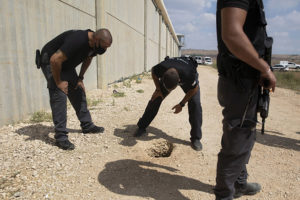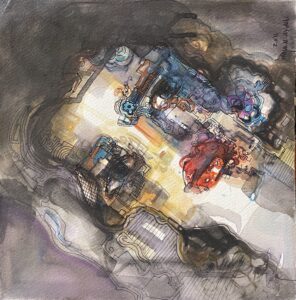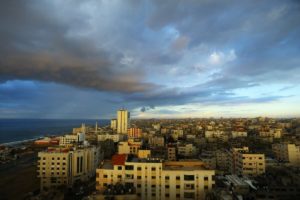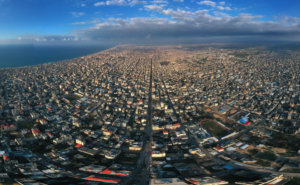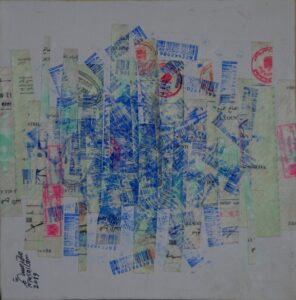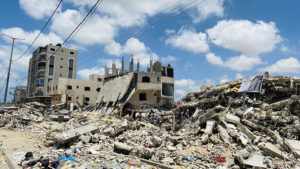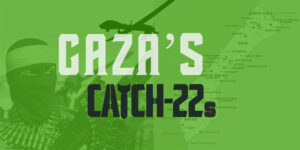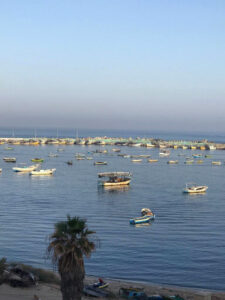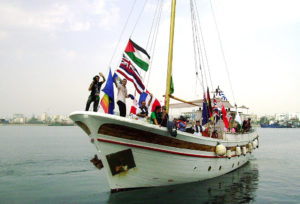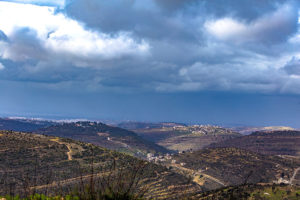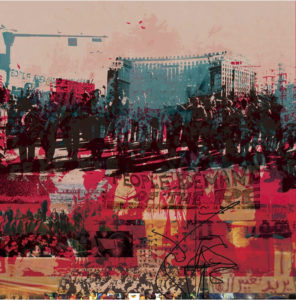Khaled Diab
“Is Orr crazy?”
“He sure is,” Doc Daneeka said.
“Can you ground him?”
“I sure can. But first he has to ask me to. That’s part of the rule.”
“Then why doesn’t he ask you to?”
“Because he’s crazy,” Doc Danneka said. “He has to be crazy to keep flying combat missions after all the close calls he’s had. Sure, I can ground Orr. But first he has to ask me to.”
“That’s all he has to do to be grounded?”
“That’s all. Let him ask me.”
“And then you can ground him?” Yossarian asked.
“No, then I can’t ground him.”
“You mean there’s a catch?”
“Sure, there’s a catch,” Doc Daneeka replied. “Catch-22. Anyone who wants to get out of combat duty isn’t really crazy.”
The situation in Gaza puts me in mind of Joseph Heller’s classic novel Catch-22, in which Yossarian, a World War II bombardier who does not wish to fly combat missions, finds himself trapped in an endless stream of circular, inescapable paradoxes of logic or illogic. Gaza is stuck in a similarly paradoxical, closed-circuit loop, nine parts tragedy to one part farce.
The ludicrous situation is not just the making of today’s players but also of the farcically tragic playbook they have inherited from their forebears. “Man makes his own history, but he does not make it out of the whole cloth; he does not make it out of conditions chosen by himself, but out of such as he finds close at hand,” Karl Marx once observed. “The tradition of all past generations weighs like an alp upon the brain of the living.”
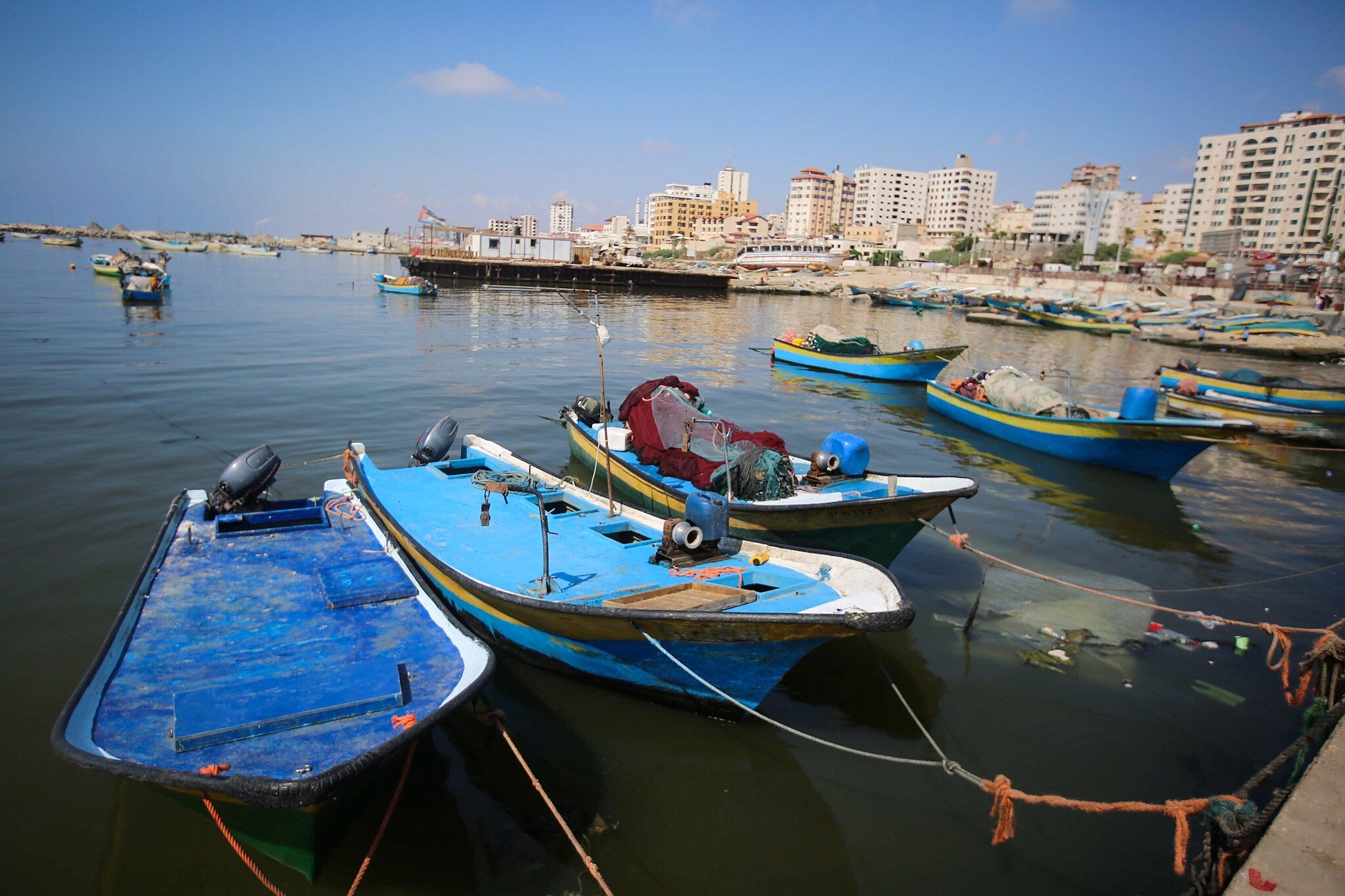
In 2007, Israel, with the aid of Egypt, sealed off Gaza after Hamas seized control of the coastal territory. Israel’s rationale was to weaken Hamas and dislodge it from power. It is now 2021 and 14 years of siege and wars — with thousands of dead and wounded and millions made destitute — have resulted in strengthening Hamas’s apparent grip on power.
The sad, ironic tragedy is that Hamas could have been “contained” without a single shot being fired now, or in 2014, 2012, 2008/9 and 2006. Hamas not only dropped its calls for the destruction of Israel from its election manifesto, the party consistently indicated its willingness to accept a two-state solution along the pre-1967 borders.
By agreeing to limit Palestine to the 1967 borders, Hamas, with true Catch-22 logic, offered de facto recognition of Israel without officially recognizing Israel. “We won’t recognize Israel, we’ll recognize an Israel-shaped state next to Palestine,” was effectively Hamas’s new line.
Now you may wonder why Hamas did not just call a spade a spade, or a state a state. This was because of the political straitjacket it had imposed on itself with its founding document. It was also because metaphysical rejection of Israel is how it distinguished itself from its main political rival, Fatah. A similar illogic applies to how Hamas fiercely condemns the Palestinian Authority for its security cooperation with Israel while coordinating security issues with Israel but not calling it that.
It was also because Hamas needed (im)plausible deniability with radicals within the movement and its rivals even further to the Islamist right, as well as from the rejectionists on the (pan-)Arabist left, who would have denounced the movement as traitors if they had officially offered to recognize Israel.
That also explains why Hamas, with its back against the wall, offered peace without offering peace, by rebranding it as a long-term or permanent “hudna” (“truce“). This raises the thorny question of whether, in a context where the word peace has been devalued to mean continued occupation (Oslo Accords) or authoritarian opportunism (Abraham Accords), peace by any other name would smell any less sweet to those who possess it than peace called peace or salam or shalom?
Israel rejected Hamas’s willingness to accept the solid, physical reality of Israel’s existence because it rejected the solid, physical reality of Hamas’s existence. This is despite the fact that Israel played a pivotal role in bringing Hamas into existence as a counterbalance against the existence of the PLO, which Israel rejected, until it accepted the PLO under Oslo.
Even though Israel accepts the PLO’s existence, in the form of the PA, the government has worked tirelessly to undermine the PA’s legitimacy by accepting the hypothetical two-state solution abroad while consistently building an actual single state at home, while opposing the one-state solution abroad. To confuse matters further, Israel’s army is simultaneously occupying the Palestinian territories while its judges and advocates claim there is no occupation.
When it comes to Gaza, Israel controls the land, skies and sea, yet claims the Palestinians there have self rule. Moreover, Israel will not lift its blockade of Gaza until Hamas is removed from power, but Hamas will not fall so long as there is a blockade. Gaza’s encirclement has so cornered Hamas that it is fighting an existential battle in which it has nothing left to lose. Even if Hamas falls, there is no guarantee that Fatah would take over, and even if it did, many Gazans will view it as a traitor and collaborator.
Israel’s blockade, even though it was supposed to rid Israel of the spectre of Hamas and Islamism in Gaza, has resulted in a plethora of movements far more radical than Hamas, including salafi jihadist groups. Nevertheless, Israel will not end its siege of Gaza until Islamist extremists deradicalize but the siege radicalizes Islamist extremists and there is little prospect of them deradicalizing as long as Gaza remains cut off from the outside world.
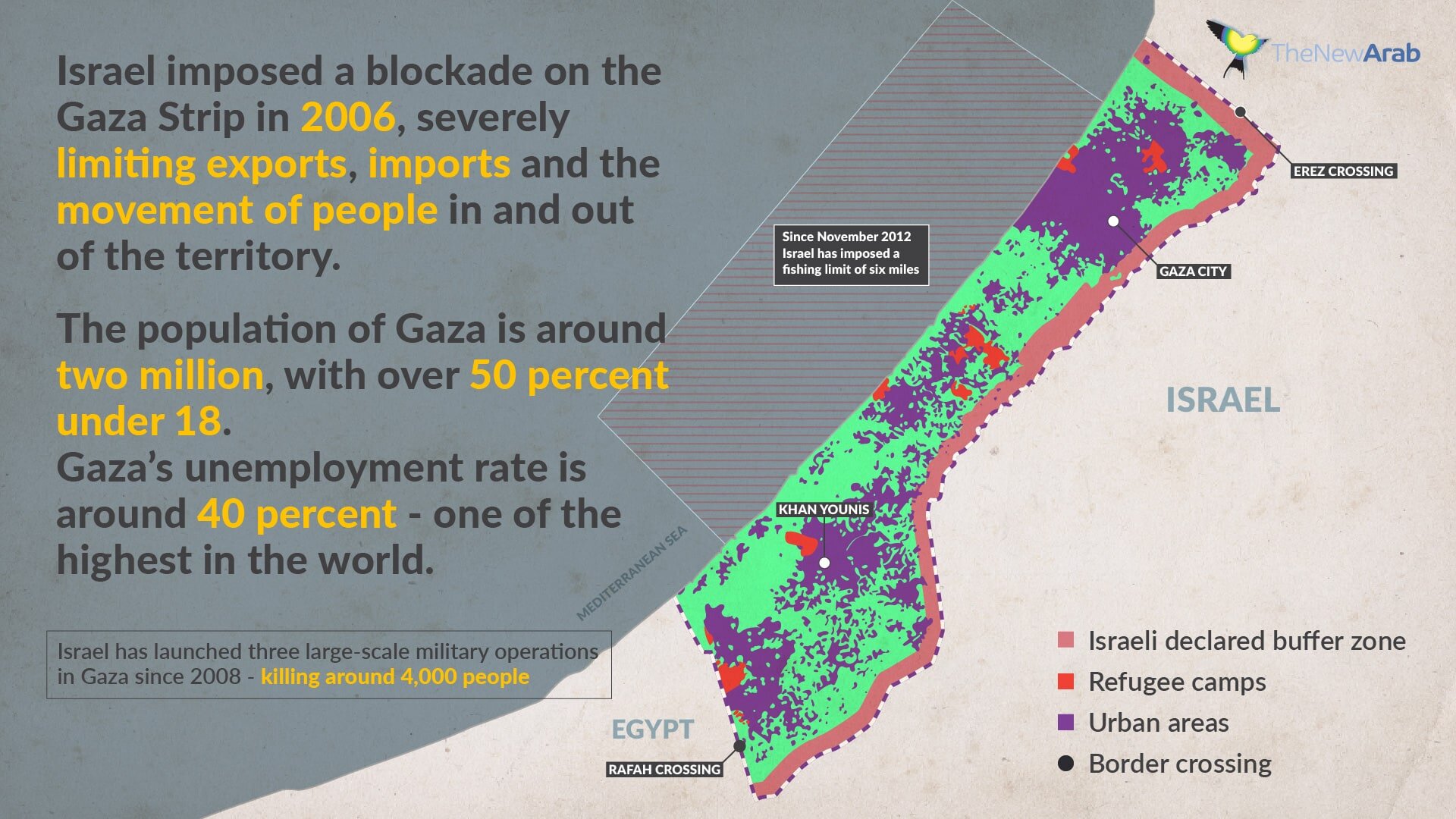
After decades of on-and-off fighting, it is clear that violence will not deliver victory, let alone peace, yet shiny weapons still evoke an almost mystical, phallic allure. This is nowhere more apparent than in Gaza.
At the core of the Gaza quagmire is a fundamental misunderstanding of what war and political violence can achieve in the Israeli-Palestinian context. Whenever violence flares up or war unleashes its ugly devastation, Israeli and Palestinian hawks take wing to persuade large portions of their populations that there is no choice but to take up arms and that, this time, a decisive blow, which never actually materializes, will be dealt to the enemy and victory assured.
One almost unfaltering element of Israel’s approach to the Palestinians is that might will win the fight and prevail in the end. Yet no matter how hard Israel hits the Palestinians with airstrikes, shelling or even ground invasions, they do not surrender. Moreover, the greater the force Israel uses to subjugate them, the greater the resistance and sumud (steadfastness) Palestinians exhibit.
Although the PLO has largely abandoned armed struggle in favor of a negotiated settlement, Hamas and other more radical Palestinian factions are committed to the way of the gun, despite the wealth of evidence that it does the Palestinian people and their cause absolutely no good.
Judging by the long annals of the Arab-Israeli conflict, armed struggle has been a double-edged sword, with the edge facing the Palestinians digging much deeper and inflicting more pain and suffering. In almost every military confrontation the Palestinians and Arabs have had with the Israelis, Israel has come out on top, with Palestinians paying a heavy price for the loss.
This is on clear display in Gaza. For two decades, since the second Intifada, Hamas and other militant groups in Gaza have been periodically firing their puny, inaccurate arsenals of rockets into Israel.
Despite the damage and occasional death in the border regions, the net effect of these rocket attacks has been a nuisance for Israel, but has unleashed a catastrophe upon Gazans, as Israel has exploited the rocket attacks as a pretext to continue its blockade and periodically flatten Gaza. Yet Hamas somehow manages to snatch rhetorical victory out of the jaws of military defeat.
“We were victorious when our people said ‘no’ to expulsion from Sheikh Jarrah,” Ismail Haniyeh, the chief of Hamas’s political bureau, said from far away Qatar. “Today there is a new balance of power,” he added, failing to explain why it looked exactly the same as the old balance. “The heroes and men of Gaza foiled the Israeli plot,” he said.
One reason why violence is so alluring is because, even though violence is the road to greatest destruction and disruption, it is also too often the path of least resistance. For Israel, it is far easier to use an iron fist to deal with the symptoms rather than treat the disease itself: the decades-old occupation and the attendant injustices it metes out on the Palestinian population. In addition, the fog of escalating conflict is a good cover for ideological settlers to drag the rest of Israeli society reluctantly towards completing the settlement enterprise.
On the Palestinian side, the resort to violence seems to be fueled largely by despair at the worsening situation, the accelerating loss of their lands and livelihoods, the repressive restrictions on their movements, the draconian martial law under which millions of them live. The more dire reality becomes for Palestinians, the more detached from reality the aspirations of Palestinian radicals become and the greater rejectionism becomes. The more Palestine becomes shackled in the chains of the present, the greater the almost mystical allure of a future “free Palestine” becomes.
But there is also a powerful element of trauma, pride and redemption associated with the pull of violence. For Israelis, the muscular Israeli Jew makes up for the perceived past weakness and humiliation of diaspora Jews who allegedly, according to popular myth in Israel, went to their deaths like “sheep to the slaughter.”
Palestinian militants also seek redemption by fire for the loss of Palestine and the decades of humiliating defeat and occupation which followed it. Rather than weakening their resolve, every military setback enhances the determination of radicals to restore their honor, to hit back hard at their sense of impotence and powerlessness.
Violence is also a powerful tool for maintaining a semblance or illusion of unity by pulling rank. Israeli and Palestinian societies are deeply polarized and divided, on internal matters but also on how to handle the other side of the conflict. If peace were to reign between Israelis and Palestinians, there is the risk that Israeli-Israeli and Palestinian-Palestinian war will break out. Direct war with the official enemy helps defer direct conflict with the unofficial enemy.
But direct war with the external enemy also acts as a proxy war with the internal enemy. Gaza has become a literal bloody battleground for Israeli politics, with Palestinian civilians paying a hefty price for the intrigues in Israel’s corridors of power. When Israel’s rightwing coalitions bomb Gaza, they plot the political blast radius to encompass their political enemies to the left of them, but sometimes also to the right.
Israel’s fallen king without a crown, Binyamin Netanyahu, was a master of using Gaza as a human shield against his mortal enemies in the Knesset. He has exploited the hostage population there for cynical electioneering and to try to stave off the net of corruption charges closing in around his cosy political fiefdom.
The Palestinians have already had their civil war, between Fatah and Hamas, the upshot of which was the further splintering of Palestinian politics. The Fatah-Hamas faultline is the most visible of the many fractures plaguing Palestinian society. Today, each of the two parties controls with authoritarian zeal what tiny scraps of authority Israel’s authoritarian occupation has left them to fight over. While there is no more direct fighting between the two parties, the conflict continues to blaze on in other forms, with Fatah using economic warfare and Hamas using conventional arms. Hamas’s rockets may be physically targeted at Israel but ideologically their intended recipient is arch-rival Fatah.
As long as the underlying assumptions are not challenged and changed, the Catch-22s afflicting Gaza and the wider conflict will continue to grind on, claiming ever more victims in the vicious grip of their inhumane and illogical logic. It’s high time for fundamental change, but nationalistic fundamentalism stands in the way… and therein lies the catch.



